
The Perfect Edible Berry Plants for Foodscaping
Published: 25/01/2023 | Updated: 24/04/2023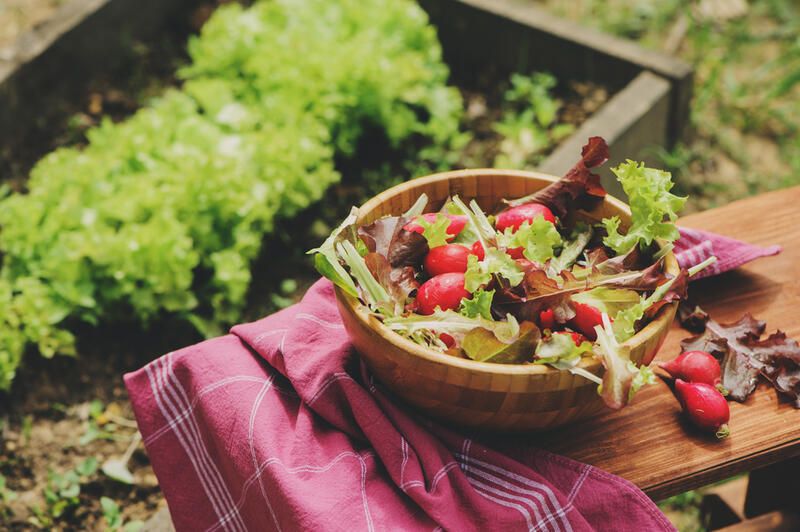
What comes to your mind at the mention of landscape plants?


To many of us, landscaping plants are ornamental elements that decorate our outdoor spaces. Though with some planning and about the same amount of maintenance, your landscape can become so much more.
Growing edible plants such as fruits, herbs, and vegetables is a part of a gardening practice known as foodscaping.
Foodscaping promotes sustainability, helps you save on your groceries bill, and offers numerous physical and mental health benefits.
What if you don't have the space for an edible garden?
Edible berry plants have ornamental flowers or leaves, eye-catching colorful fruits, and require no more maintenance than your average garden plants.
This quality makes them able to go perfectly with the rest of your landscape without the need for a unique space.
These edible berry shrubs will fit right into your landscape while providing you and your family with healthy and fresh treats.
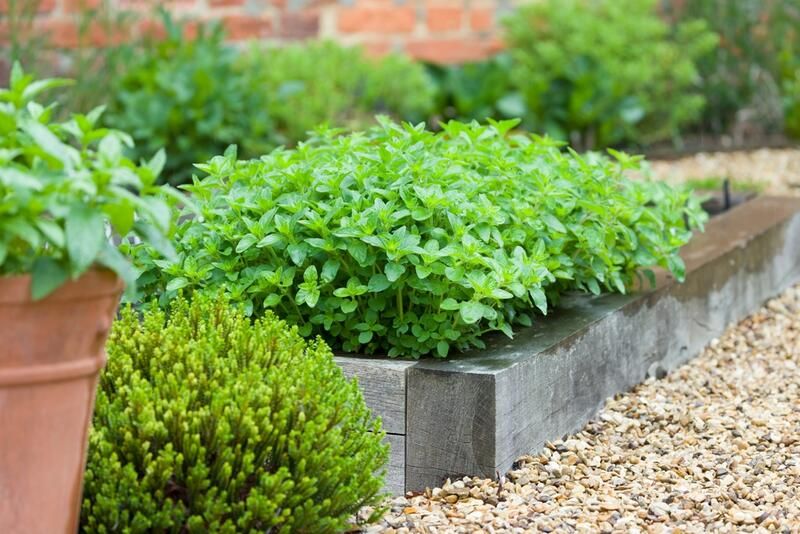
The Best Edible Berry Bushes for Your Garden
Compared with other fruit-bearing trees or shrubs, berry bushes are relatively easy to plant and care for.
They're also very space-efficient and don't take a long time before they start blooming or bearing fruit.
There are many different types of wild berries you can grow in your yard.
Some berries you see in stores all the time while others with a shorter life after harvesting are considered rare since they do not handle transportation.
Luckily, both types are ideal for at-home gardening.
Here are a few berry bushes to consider for your landscape.
1. Lowbush Blueberry
botanical name: Vaccinium angustifolium.
Lowbush blueberry plants will not only provide you with delicious berries but will also give your garden a beautiful pop of color at all times!
In spring, they bloom beautiful white flowers, and soon enough, you can have a few berries freshly picked from your garden.
Lowbush blueberry foliage also turns red in fall providing year-round color to your yard.
These plants thrive in full or partial sun and well-draining soil and do great in zones 2 to 7.
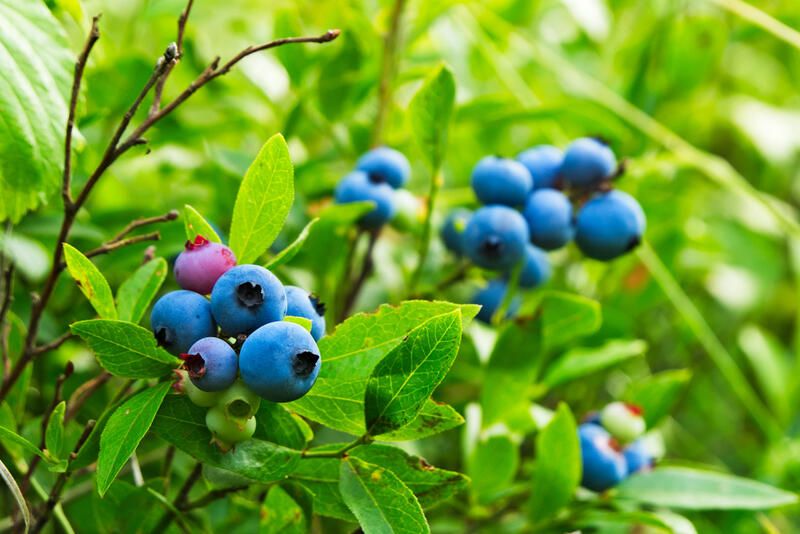
2. Honeyberry/Haskap
Botanical name: Lonicera caerulea.
You may know them as honeysuckle or haskap.
Honeyberries are super hardy and can grow and thrive in many different zones and climates.
They grow best in partial sun and moderately acidic soil in zones 2 to 9.
Haskap plants produce delicious berries that can be eaten fresh or employed in cooking and baking.
The pale yellow funnel-shaped flower blooms give your yard color interest throughout spring and soon enough they turn into dark purple edible berries you can enjoy through summer.
3. Wild Raspberry
Botanical name: Rubus idaeus.
Raspberry bushes can grow from 3 to 9 feet in height and length, their hardiness zones are from 4 to 8 and they thrive in full or partial sun and well-draining soil.
They're best planted in early spring as they bloom from summer through fall starting with attractive white flowers till they turn into the tasty berries we love.
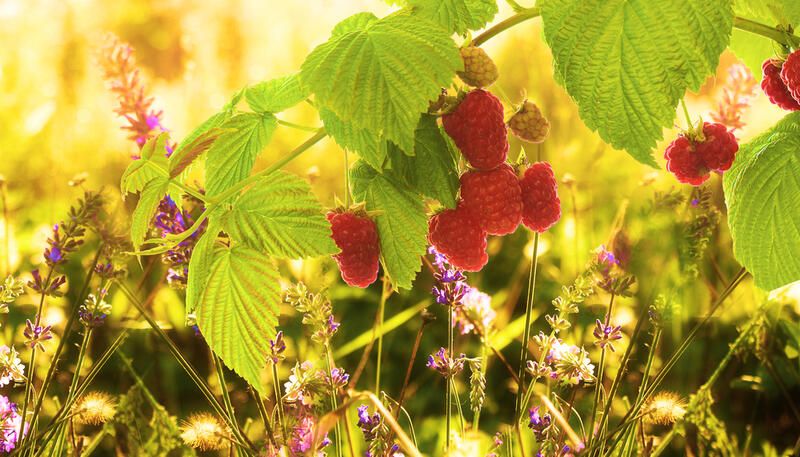
4. American Elderberry
Botanical name: Sambucus canadensis.
Elderberry makes a beautiful addition to any garden owing to its lush green leaves and clusters of white flowers.
When fully ripened, elderberries can be used in cooking or eaten raw.
Elderberry plants work best in moist soil in partial to full sun exposure and do great in planting zones 3 to 9.
5. Goji berry bushes
Botanical name: Lycium barbarum.
You most likely won't be able to find goji berries at your local supermarket. But you sure can enjoy their nutrition and sweetness from the comfort of your home.
Goji berries are very easy to grow and provide a generous harvest you can enjoy all through summer.
Those berry bushes give beautiful purple blooms that turn into bright red berries packed with vitamins and nutrition.
They thrive in zones 5-9 and require full to partial sun and well-draining soil.
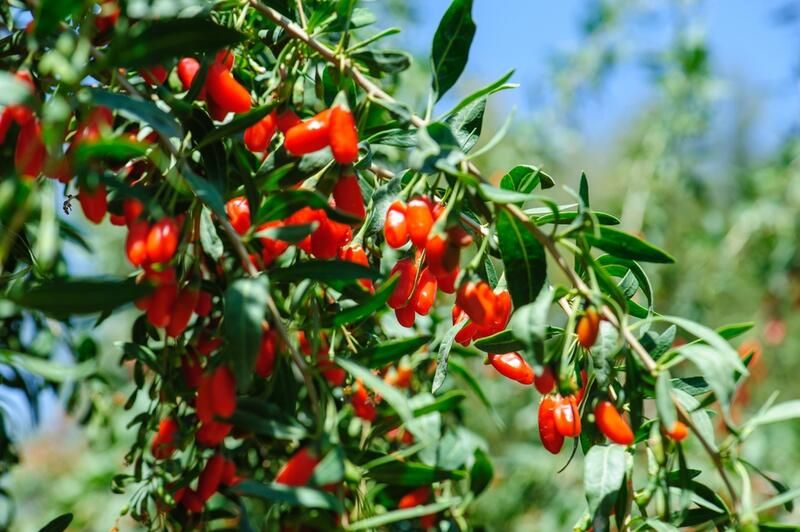
6. Blackberry Bushes
Botanical name: Rubus fruticosus.
Blackberry bushes are very similar in nature and growing habits to raspberry and Goji berry bushes. They're also super easy to grow and maintain.
These bushes tend to spread through their stem systems so make sure to only plant them a few inches below the soil's surface.
Blackberry bushes are best planted in a fully sunny site and do well in USDA zones 5 to 8.
7. Saskatoon berries
Botanical name: Amelanchier alnifolia.
White flower blooming plants that later turn into dark blue berries.
Like most berry bushes, saskatoon berries are best placed in a sunny location in well-drained soils as they don't survive in clay or highly wet soils.
Best Fruit-Bearing Berry Trees
1. Juniper trees
Juniper trees produce aromatic seeds known as juniper berries. These berries are used to make spices and essential oils that are used in cooking.
Only some variations of Juniper trees have edible berries such as Juniperus communis or common juniper.
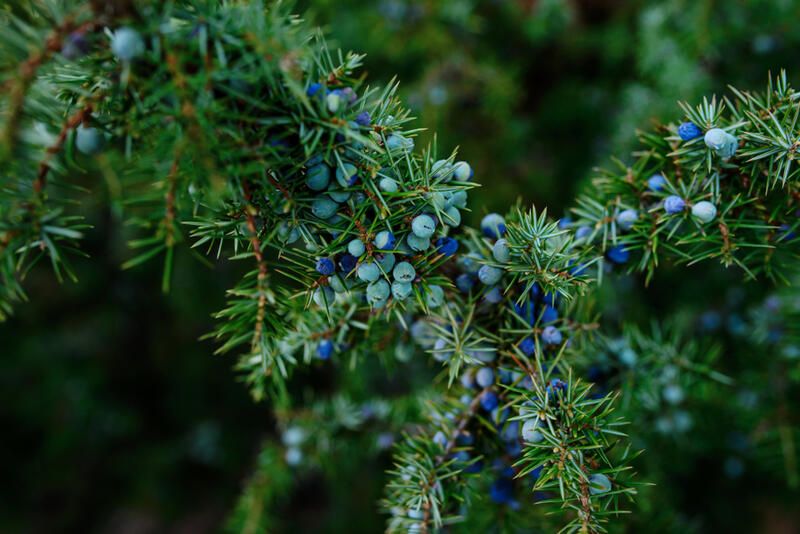
2. Mulberry trees
These trees thrive in zones 4 to 8 in full sun and moderately acidic soil.
Mulberry fruits are best consumed when fully ripened as they can be mildly toxic otherwise.
Edible Berries Q and A
Now that we've gone over some edible berry plants that you can add to your garden, here are some answers to the most asked questions about them.
What are the best conditions to grow berries?
As you may have noticed from what we went over, most berry plants require well-draining soils with plenty of sunlight.
Though some variations may thrive in different conditions, for instance, gooseberry and elderberry bushes prefer moist soil to flourish.
That being said, it's best to research or get advice on the best growing conditions for the plants you decide to go for to ensure healthy crops.
Is growing berries beneficial?
Gardening activities are proven to have a hugely positive effect on mental and physical health.
On Top of that, you'll have your very own source of superfood that is packed with antioxidants and vitamins that help your body fight disease.
Growing berry plants not only provides you with countless physical benefits but also helps beautify your yard.
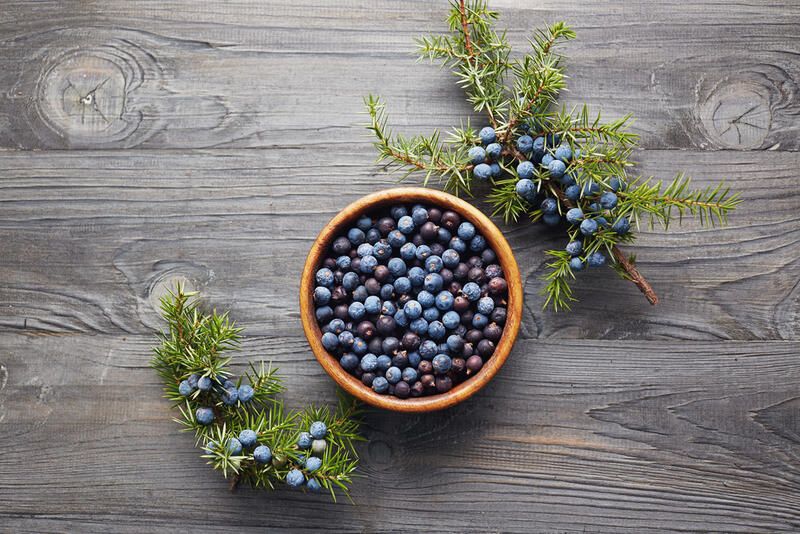
Should I prune my berry bushes?
Pruning typically makes your bushes more manageable and healthier. Berry bushes on average need to be pruned once a year after harvesting.
Consult a landscaper on the best time and method to prune your bushes.
When is the best time to grow berry plants?
Most berry bushes are best planted in early spring and bloom in the following year. Though the ideal planting time may differ based on the zone you're located in.
Ready to Start Your Edible Garden?
More and more homeowners are choosing sustainable landscaping for their yards. And your outdoor space can effortlessly join the move!
Shrubhub will help you create the ultimate sustainable garden that will make an impact on the environment and your day-to-day life.
Our economic packages will put you on the right track to ensure sane decisions on your home improvement plan.
Go to shrubhub.com


